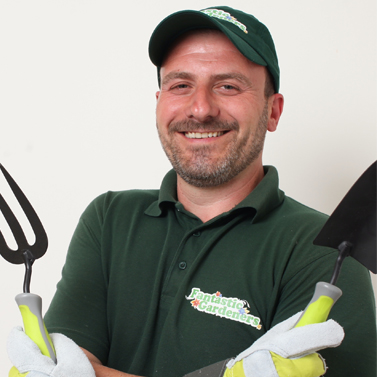What is the proper way to reduce, reuse, and recycle food waste?
We have all heard the phrase “reduce, reuse, and recycle.” This phrase is most commonly associated with handling things like plastic, paper, and metal. However, this phrase and way of thinking should also be associated with the food we eat, or rather, the food we don’t eat. Keep reading to discover how to reduce, reuse, and recycle food waste.
Upcycle Food Waste
Upcycling food waste is a great way to reduce the amount of waste in landfills. This can be beneficial for the environment as it’ll reduce the production of methane and carbon emissions, which happens when organic material gets mixed with other types of garbage.
[Upcycling food] can also save money by making the most out of the food you buy. Some tips and examples for upcycling food waste include:
● Make Broth– When you’re chopping vegetables, don’t throw away the scraps. Instead, use them to make a flavorful vegetable broth, which you can use later for cooking. Save the scraps in a container or a bag in the freezer until you have enough to make a batch.
Once you’ve collected enough, simmer the scraps in water with herbs and spices for several hours. Strain the broth and use it in soups, stews, and other recipes.
Similarly, you can use citrus zests to flavor recipes like baked goods, marinades, and dressings. Use a zester or a vegetable peeler to remove the zest from the fruit, chop it finely and store it in the freezer until you’re ready to use it.
● Make Bread Crumbs– If you’ve accumulated some stale bread, you don’t have to throw it away. Cut the bread into cubes, or grind it into crumbs, and bake it in the oven with olive oil and herbs until it’s crispy. Afterward, you can use the croutons to top salads and soups and the breadcrumbs to coat chicken or fish dishes.
● Make Smoothies– Don’t throw vegetables away if they are starting to wilt or go soft. Instead, use them in smoothies. Chop the vegetables and add them to your blender along with fruits and liquid such as milk. Adding other ingredients like protein powder or nut butter will make your smoothies even tastier.
● Compost– Composting is an affordable way to nourish your plants and reduce household waste. Luckily, even if you don’t have a yard or live in a small apartment, you can still take up the practice and reap its benefits indoors.
Even if you don’t have a compost bin, you can save vegetable and fruit scraps in a container and take them to a local community composting program or drop-off location.
You can store a composting bin in any dark and dry space, such as a basement, closet, or under the kitchen sink. It’s up to you to decide what method of composting suits you better, but the best ones for indoor spaces are vermicomposting and Bokashi.
Homemade compost has many uses. It can be spread over potting soil and used as mulch for your plants. Combining one part potting soil with two parts compost makes a great, nutrient-rich soil that can serve as the perfect base for starting a vegetable garden.
When collecting the compost out of the bin, you can also use any liquid collected in the tray below it. Dilute it with ten parts water and fill it in a spray bottle. It’ll make a perfect spray for nourishing houseplants.
If you don’t have a way to use your ready compost, you can always share it with neighbors, friends, and relatives who garden or compost. Or [you can] donate it to local farms or animal sanctuaries.
● Grow Food From Scraps– Some types of food waste can be used to grow new plants. For example, you can regrow celery from the base of the stalk, new potatoes from sprouted ones, or plant garlic cloves that have started to sprout.
You can also grow herbs like basil, mint, and cilantro from cuttings. All you have to do is place the cuttings in water until they root and then plant them in some soil.
● Make Tea– Some food waste can be made into tea used to water plants. For example, banana peels, eggshells, or vegetable scraps make an excellent, nutrient-rich tea. Steep the food waste in water for a few days, then strain out the solids and use the liquid to water your plants.
● Deodorize Your House– A great way to make your whole house smell incredible is a stovetop simmer from food leftovers. You can do it in a pot or a slow cooker.
Fill your vessel halfway with water, and add any combination of ingredients with scents you like, such as leftover orange, lemon, or other citrus peels. You can also add cinnamon, cloves, vanilla extract, lavender, etc. Bring it to a boil or heat your slow cooker on low.
If you go for the slow cooker, let it sit and simmer all day. If you’re doing it in a pan, bring it down to a simmer once it has boiled and let it stay like that for a couple of hours. Make sure to watch the pot on the stove while the slow cooker can be left unattended.
Adopt One Of These Ideas
While I don’t think there is anything such as a prescriptive ‘proper’ way to do things, this is what works for us:
● I have been composting our food waste for some years, which becomes a rich mulch source sometime down the track.
● [We] buy in smaller quantities, so we consume all we buy, reducing our food waste.
● [I] use slightly over-ripe fruits in smoothies or baking.
● [I] cut out the not-so-good parts of veggies and then use the remaining part that is perfectly fine to cook with.
● We used to recycle single-use plastics with the soft-plastic bins at the major grocery stores until they stopped that service somewhat recently.
● Other recyclable items get a second use at a local kindergarten that is [in need of] such items.
● We’ve become a household of vegans & vegetarians, so we’ve cut down on our imprint on the environment.
Reduce, Reuse, Recycle, AND Donate
Reducing food waste involves meal planning, proper storage, and using leftovers creatively. Reusing food waste means turning it into something new, while recycling it through composting creates nutrient-rich soil. Donating excess food to those in need is also important.
Consider These Five Tips
As a business professional with 30+ years of experience and a human who has consumed food for nearly 50 years, I am familiar with some ways you can reduce/reuse/recycle food.
1. Plan Ahead– If you don’t have a schedule for what you will eat and when you will eat it, you are more likely to have food spoil, which means you will end up with food waste.
Making a meal plan includes writing a list before grocery shopping and sticking to your list. Doing this will help ensure you don’t buy unnecessary things that might not get eaten or will spoil.
2. Eat With Your Stomach, Not Your Eyes– Many of us have been guilty of this, and some are more guilty than others. We see food that looks good and take a big helping because our eyes tell us to do so.
But our stomachs are only so big and can only hold so much food. It’s better to take smaller portions, finish them, and then take additional smaller portions to avoid unnecessary food waste.
3. Freezers Are Our Friends– We might buy more food than we intended for a few reasons- sometimes it’s more economical to buy from warehouse stores, and other times grocery [stores] will have buy-one-get-one deals.
It’s important to remember many foods will freeze well, especially after they have been prepared. By freezing extra portions, you will save on food waste while [also] making food prep easier by cooking larger batches at once.
4. Create Compost– Instead of throwing away your food, use it to make things grow by making compost. Home-made compost isn’t too difficult to make. You can even use this compost to grow more food, such as fruits and vegetables.
5. Add Another “R” To Reduce/Reuse/Recycle– The R to add is “regift.” If you have purchased more food than you or your family can consume before it goes bad, you don’t need that food to go to waste.
Many organizations, such as food banks, churches, temples, and more, will gladly take your packaged foods and provide these to individuals [in need]. Not only will you be helping the environment, but you’ll be helping other people.
Changing our bad habits into good ones can be hard to do. It’s easy to pretend that the earth is fine, the state of our food sources is fine, and everything is fine. And maybe we are fine right now. But we aren’t just reducing, reusing, and recycling to see results today. We do this to create a better future.
This is a crowdsourced article. Contributors’ statements do not necessarily reflect the opinion of this website, other people, businesses, or other contributors.




